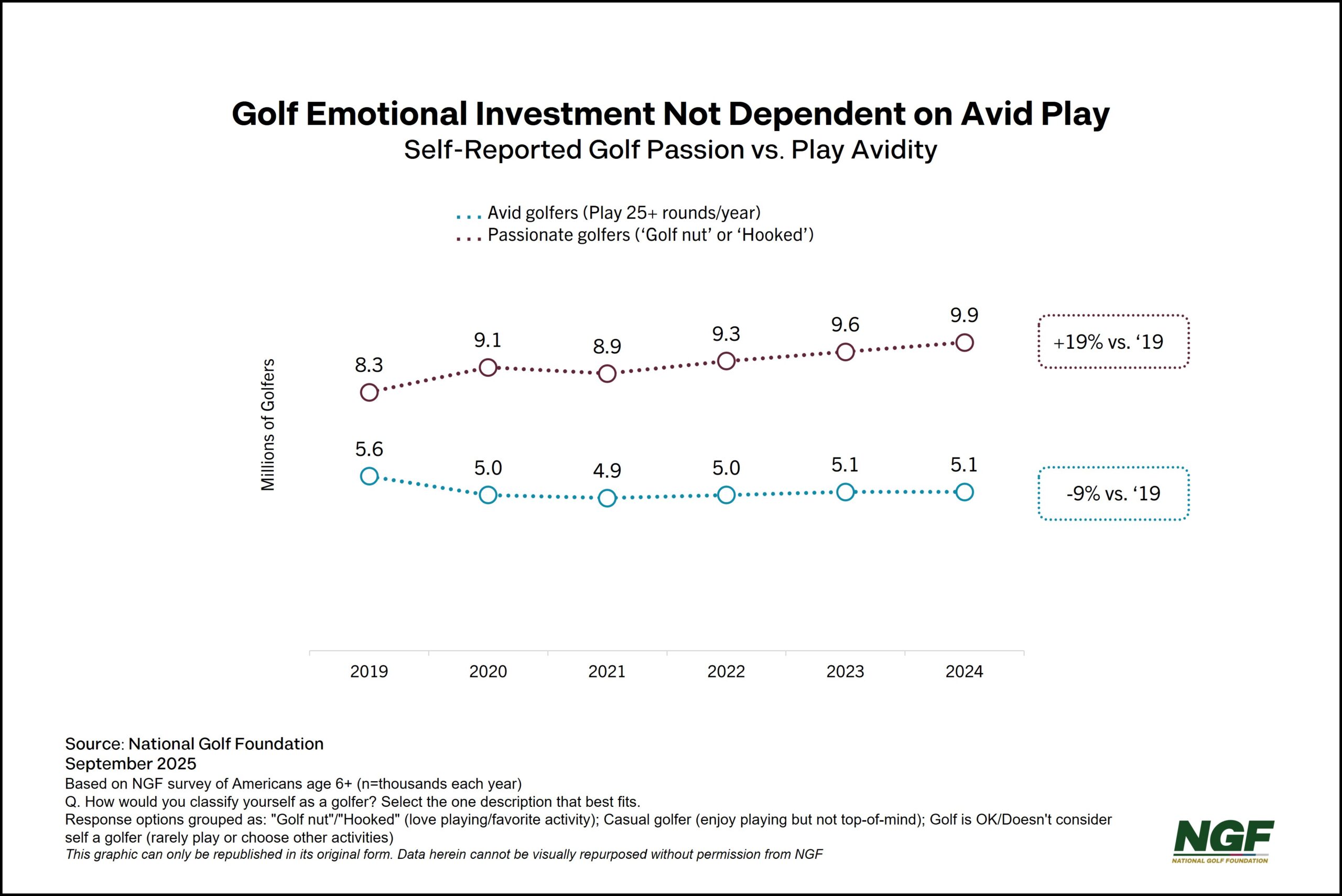Discussions of golf’s recent momentum have typically focused on full tee sheets, off-course participation, and investments in course improvements – all very good measures of success. Even with typical metrics pointing to a robust recreational game, it feels like something is missing.
In the middle of a period of player growth, some NGF data could be construed as evidence of vulnerability among the most frequent and committed players. For instance, the number of Avid golfers, those who play the most rounds (25+ rounds per year), has eroded over time.
Despite this, we know U.S. golf rounds reached new highs in 2024 and have grown significantly since pre-pandemic levels. Even with their numbers faltering, golf’s most avid players have been responsible for a sizable portion of that growth in rounds (44%).
However, we can’t ignore that 20% of the growth in rounds since 2019 was fueled by a rise in occasional players, as the number of Americans who play between 1-7 rounds annually jumped from 11.5 million to 14.6 million over the past five years.
In the late 1990s, golf experienced a similar rise in Occasionals during what we now call the “Tiger Boom.” As the Great Recession took hold in subsequent years, the number of occasional golfers slipped. Today, whether temporarily or otherwise, golf has captured the global zeitgeist once again. So, are there notable differences when it comes to golfer segments in the current era?
For one, the number of golfers who place themselves on the highest level of NGF’s ‘passion scale’i has grown nearly 20% since the pandemic.

Logic would tell us that the golfers who play the most are naturally the most passionate about the game. But the data suggests passion for golf is not always shown through frequency of play. Even among occasional players, over 1 in 5 say they’re a Golf Nut or Hooked on the game.
Further, golfer commitmentii, a slightly more generous measure of emotional engagement, is directionally higher today than it was when we first started measuring it in the early 2010s, even among our most infrequent (occasional) golfers.
Taken together, these findings suggest a more stable base, regardless of play frequency.
Rounds played can go up or down by necessity or choice, but today’s ‘occasional’ may represent a new type of golf enthusiast: emotionally invested fans who follow the sport, consume golf content, and identify with golf culture – even when they can’t or don’t play green-grass rounds at the Core (8+ rounds annually) or Avid thresholds.
Golf’s heightened cultural relevance symbolizes something well beyond the boundaries of any course. What is missing from discussions of golf’s growth is its emotional footprint, an underappreciated, but still valid metric of success.
Golf’s ability to create deep emotional connections, even among those who don’t play often, suggests a healthy foundation of players who will be in the game as customers for many years to come. The future growth of golf, therefore, may not be about simply getting everyone to play more rounds, especially as the majority of courses feel they’re already operating at or near capacity. It may be about growing golf’s emotional footprint by creating unique ways for passionate fans to engage with the game, build communities, and showcase their shared cultural identity, further integrating golf into their everyday lives.



